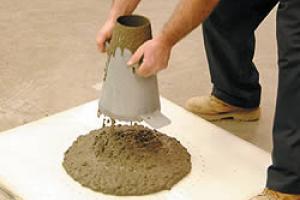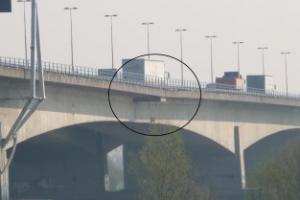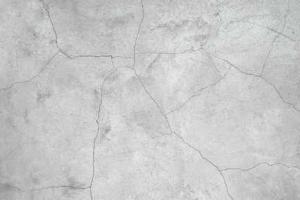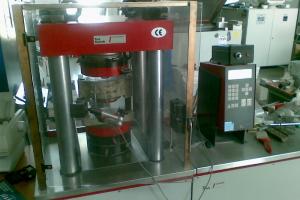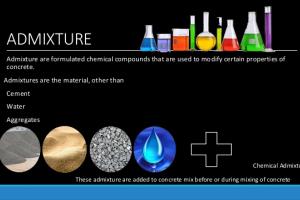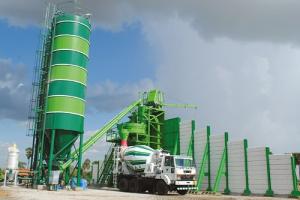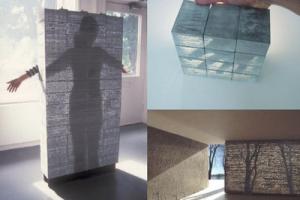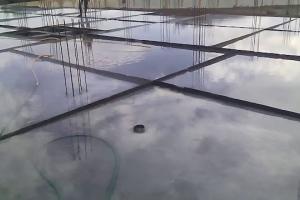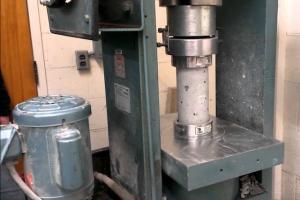Corrosion in Concrete Reinforcement
The basic problem in Reinforced concrete structures is the corrosion of steel reinforcement. Corrosion in concrete reinforcement, also known as steel corrosion, is a common problem in reinforced concrete structures. The main cause of this corrosion is intrusion of water inside the RC structures. It occurs when the steel reinforcing bars, also called rebars, come into contact with water, oxygen, and other substances that cause a chemical reaction on the surface of the steel. The corrosion of steel reinforcement can be judged by peculiar cracking of concrete structures. At last stage of corrosion, the steel reinforcement becomes exposed and the extent of corrosion can be seen as rust. Corrosion of steel reinforcement usually occurs more in externally located RC members as compared to internally located RC members.
Process of Corrosion in Concrete Reinforcement
The process of corrosion in concrete reinforcement involves the following steps:
-
The presence of moisture and oxygen: Moisture and oxygen are essential components for the corrosion process. Moisture can enter concrete through cracks, pores, or improperly sealed joints, while oxygen can permeate concrete through the same pathways.
-
Formation of anodic and cathodic sites: Once moisture and oxygen are present, corrosion begins with the formation of anodic and cathodic sites on the surface of the steel rebar. The anodic site is where the corrosion reaction takes place, while the cathodic site is where the electrons are transferred to the anodic site.
-
Ionization and oxidation of iron: The anodic site is where iron is ionized and oxidized, producing ferrous ions and electrons. These electrons are then transferred to the cathodic site, where they react with oxygen and water to produce hydroxyl ions.
-
Formation of rust: The hydroxyl ions produced at the cathodic site combine with ferrous ions from the anodic site to form rust. As rust forms, it takes up more space than the original steel, causing it to expand and weaken.
Types of Corrosion in Concrete Reinforcement:
There are two types of corrosion:
- Crevice Corrosion
- Pitting Corrosion
Reasons of Corrosion of Reinforcement:
There are two main reasons behind the corrosion of steel reinforcement:
- Localized damaging to the film over the steel due to chloride ions
- Increase in the concentration of carbon dioxide in the environment that leads to corrosion of steel in concrete
Repairs to Corroded Reinforced Concrete structures:
- For inspection, it is necessary to expose the corroded locations up to such an extent that these locations can be seen through naked eye.
- First step in treatment of rusting on reinforcement is cleaning of rust with the wire brush.
- After cleaning, tamp the surface with hammer having the weight at least 5 lbs.
- Then rub the surface with wire brush or hessian rope. In the market, many rust removing chemicals are also available. Those chemicals can be used if cleaning of rust is to be done more effectively.
- In important members (members that has to carry heavy load) of RC structures, sand blasting can be used for cleaning of rust.
- If the cleaned surface is found heavily corroded, then the surface can be coated with black ship paint (that paint is marine paint). This paint usually seals off he steel surface and prevent the further corrosion.
- Corroded members which are critical in the whole structure such as columns should be additionally reinforced by using hooked or anchorage connections or by using beams. Corroded slabs can be additionally reinforced by using wire mesh (which is locally said to be as Jali).
Corrosion in concrete reinforcement can have serious consequences for the integrity and safety of reinforced concrete structures. It can weaken the steel reinforcing bars, reduce the bond strength between the steel and concrete, and cause cracking, spalling, and other forms of damage to the concrete.
To prevent corrosion in concrete reinforcement, several measures can be taken, including proper concrete cover over the reinforcing steel, using corrosion-resistant steel, using concrete with a low permeability, applying coatings or sealants to the concrete surface, and providing proper drainage to reduce the amount of moisture in contact with the steel. Regular inspections and maintenance can also help identify and address any signs of corrosion in the early stages.



